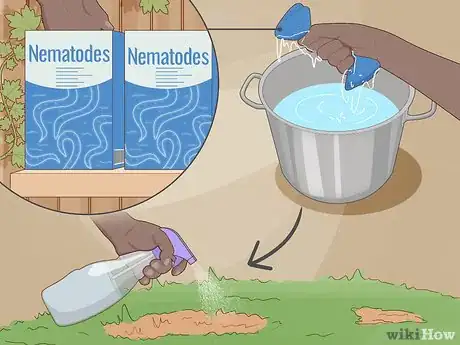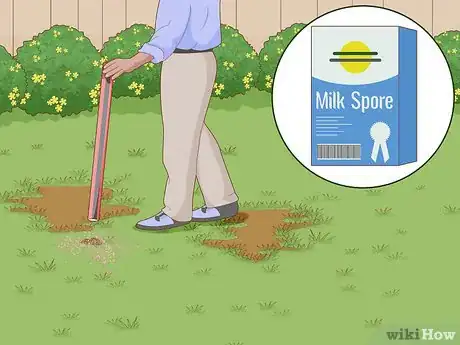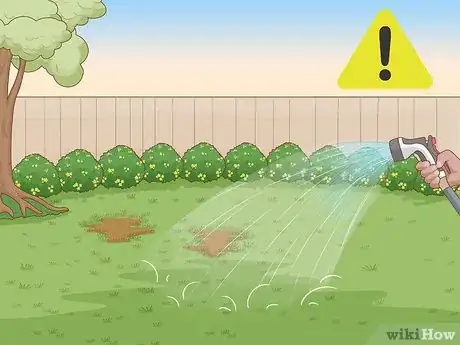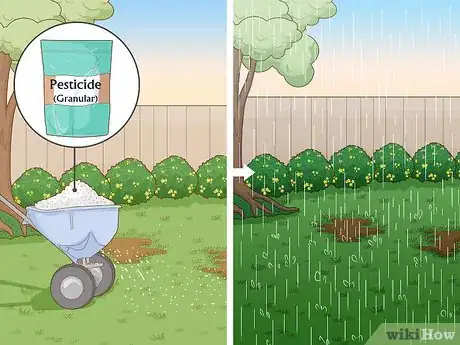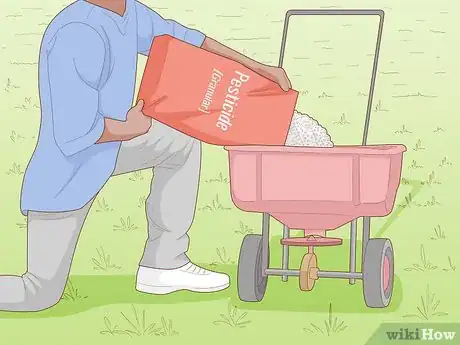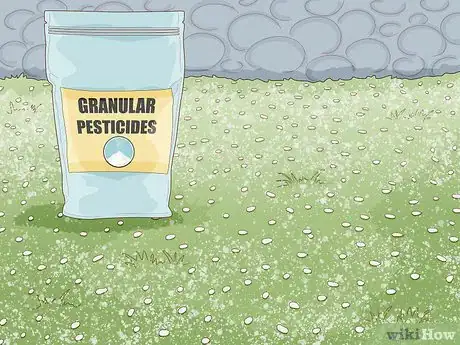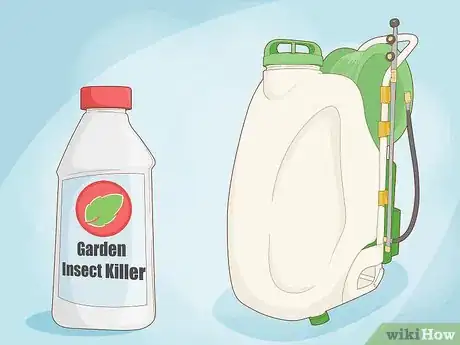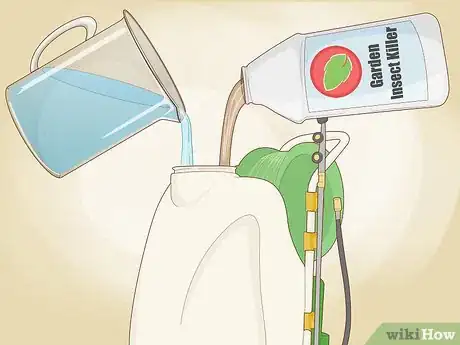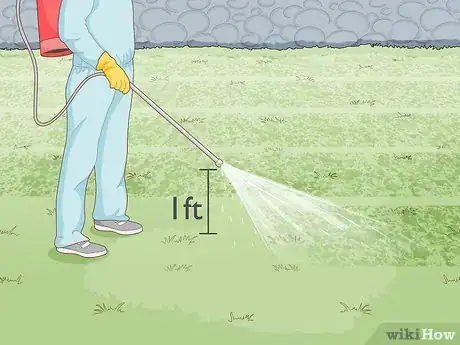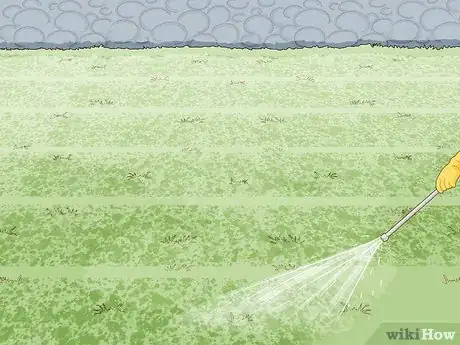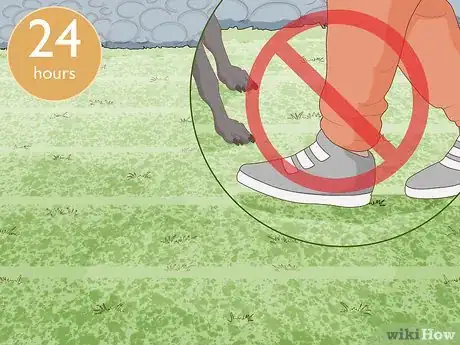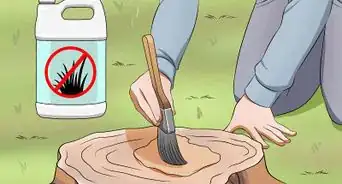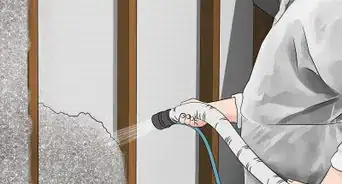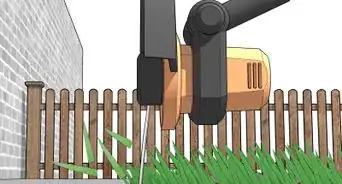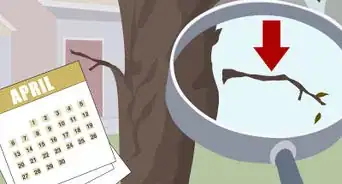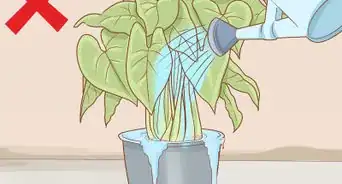This article was co-authored by wikiHow Staff. Our trained team of editors and researchers validate articles for accuracy and comprehensiveness. wikiHow's Content Management Team carefully monitors the work from our editorial staff to ensure that each article is backed by trusted research and meets our high quality standards.
There are 12 references cited in this article, which can be found at the bottom of the page.
wikiHow marks an article as reader-approved once it receives enough positive feedback. In this case, 80% of readers who voted found the article helpful, earning it our reader-approved status.
This article has been viewed 407,956 times.
Learn more...
White grubs are the larvae of various beetles that feed on the fibrous roots of turf grass, causing your lawn to grow brown spots. There are lots of ways you can get rid of these pests, from using a natural method to using a pesticide. If you'd rather stay earth-friendly, try spreading milky spore or nematodes on your lawn to get rid of the grubs. Spreading a granular or liquid pesticide evenly over your grass is another way to ensure your lawn is grub-free.
Steps
Using Natural Methods
-
1Set up a bird feeder to attract birds that will eat the grubs. Birds, such as robins or other song birds, are great for your yard as they feed on bugs like grubs. To attract birds, try setting up a bird feeder or installing a small bird bath so birds are more likely to come to your yard.[1]
-
2Purchase nematodes that will eat the white grubs. Nematodes are little organisms that feed on grubs but won’t harm your lawn. The nematodes come on a sponge that you’ll dip into a bucket of plain water, squeezing the sponge in the water to make sure all the nematodes are released. Pour that water into a sprayer or watering can before applying it to your lawn where the grubs have affected the grass.[2]
- Read the instructions that come with the nematodes for details about how to apply them to your grass.
- Purchase nematodes in a gardening store or online.
- Be aware that the nematodes are alive, so you’ll want to use them quickly after purchasing to ensure they stay active and healthy.
Advertisement -
3Spread milky spore over the yard to deal with the grubs. Milky spore is a lawn mix that you spread over your yard using a spreader. It will kill the grub larvae while leaving your yard healthy. Milky spore isn’t an immediate fix—it can take 1-3 years for you to begin seeing the effects—but it is a very effective long-term grub solution. Once the milky spore begins working, you won't need to reapply it for 15-20 years.[3]
- This works best for Japanese beetle grub larvae.
- Purchase milky spore from your local hardware or gardening store.
- Pour the milky spore mix into a lawn spreader, using the spreader to distribute the mix evenly over your lawn.
-
4Avoid watering your lawn too often. White grubs need lots of moisture to grow and survive. By watering your lawn sparingly, your grub problem will decrease because they won’t be able to continue living in such a dry environment.[4]
- Try to find the right balance between watering your lawn so it stays healthy, but not so often that it’s full of moisture.
- If your lawn is getting water every day, this is too much and creates a great environment for the grubs.
Spreading Granular Pesticide
-
1Spread your pesticide before a rain shower, if possible. A granular pesticide works best if it’s able to soak into the ground. After you’re finished spreading the pesticide, it’s important to wet the grass so it can work most effectively. You can either plan to spread the pesticide before it’s supposed to rain, or you can plan on using a sprinkler to water the grass afterwards.[5]
- Look at the forecast in your area to see when it might rain.
- Try not to wait more than 3 or 4 days after spreading the fertilizer to wet the ground.
-
2Load your granular pesticide into a spreader. Visit your local home improvement or garden store to find a granular pesticide that controls grubs. Pour the bag of pesticide into the yard spreader, checking the settings of the spreader to make sure they’re on an appropriate setting.[6]
- Make sure you purchase enough to cover your entire yard, looking at the bag to tell you how much surface area it will cover.
- For example, if your yard is 4,800 ft (1,500 m) squared, a bag of pesticide that covers 5,000 ft (1,500 m) squared will work well.
- Popular granular pesticides for grub control include GrubEx or Grub Killer Plus.
- If you don't have a spreader, pour the mix into a small cup and use this to drizzle the pesticide over your lawn by hand.
-
3Walk the spreader across the yard, adjusting the settings if necessary. With your pesticide loaded in the spreader, begin walking in a pattern across your yard, spreading the fertilizer. If you notice your fertilizer is coming out too slowly or quickly, adjust the settings on the spreader.[7]
- It’s important that your entire yard is equally covered by the pesticide.
- Walk in straight rows to make sure you know which areas you’ve already covered.
- Starting with a low setting on your spreader will ensure the pesticide comes out slowly. You can increase this if you find you’d like the pesticide to come out faster.
-
4Cover the entire yard with the granular pesticide. Apply the pesticide to your entire lawn, paying close attention to the areas where the grubs have already affected the grass. Continue walking in straight lines across the yard, spreading an even layer of pesticide over the grass until you’ve covered the entire lawn.[8]
- Once the pesticide is watered in to the grass, you’ll be set for the entire season.
Spraying a Liquid Pesticide
-
1Pick out a liquid pesticide and the necessary equipment. To spray the pesticide on your lawn, you’ll need a liquid pesticide that controls grubs, as well as a hose and sprayer. You can find all of these things at your local hardware or garden store, as well as online.
- Look for liquid pesticides like Garden Insect Killer or Grub Control Plus.
-
2Mix the liquid pesticide with water according to the instructions. You’ll pour both liquids directly into the spray tank you’re using to spray the grass. Read the instructions on your pesticide to tell you the correct ratio of pesticide liquid to water. Mix the liquids together by closing the water tank and shaking it gently.[9]
- Your liquid pesticide will likely come with a measuring cup to help you.
-
3Use the hose and sprayer to cover the ground with the pesticide. Press the nozzle on the hose, causing the liquid pesticide to come out. Spray the fertilizer on the grass, holding the end roughly 1 ft (0.30 m) from the ground.[10]
- Wear gloves and a mask over your mouth and nose for protection against the pesticide, if desired.
-
4Walk in even rows to ensure you cover the ground evenly. Continue spraying the fertilizer on the lawn, walking in straight even lines across the yard so that the grass is covered evenly. Pay special attention to the areas that have been affected by the grubs.[11]
- Continue spraying the pesticide until the entire lawn is covered.
-
5Stay off of the lawn until the pesticide dries. This will help make sure the pesticide works properly, as well as keep you safe from the chemicals. Try waiting at least five hours before using your lawn.[12]
- Keep any children and pets off the lawn until it dries as well, waiting 24 hours just to be safe.
- Your bottle of liquid pesticide will say how long it takes to dry once applied to the lawn.
Community Q&A
-
QuestionWhat is diatomaceous earth and where do we find it?
 Community AnswerHome Depot. It is useful in killing bugs that crawl through it. We use it around our perimeter.
Community AnswerHome Depot. It is useful in killing bugs that crawl through it. We use it around our perimeter. -
QuestionWill grubs attack plants in flowerbeds?
 Community AnswerYes, they will attack plants in flowerbeds.
Community AnswerYes, they will attack plants in flowerbeds. -
QuestionHow long do grubs live?
 Community AnswerThat depends on the type of grub. June bug grubs live 11 to 12 months. The acacia lives up to 11 or more years.
Community AnswerThat depends on the type of grub. June bug grubs live 11 to 12 months. The acacia lives up to 11 or more years.
Things You'll Need
- Bird feeder and bird seed (optional)
- Nematodes (optional)
- Milky spore (optional)
- Granular or liquid pesticide (optional)
- Lawn spreader (optional)
- Hose and sprayer (optional)
- Mask (optional)
References
- ↑ https://getridofthings.com/get-rid-of-grubs/
- ↑ https://www.essentialhomeandgarden.com/how-to-get-rid-of-grubs/
- ↑ https://www.gardendesign.com/advice/grub-worms.html
- ↑ https://www.bobvila.com/articles/how-to-get-rid-of-grubs/
- ↑ https://www.youtube.com/watch?v=QVysAMZXuic#t=7m34s
- ↑ https://www.youtube.com/watch?v=QVysAMZXuic#t=5m46s
- ↑ https://www.youtube.com/watch?v=FkQZiY_zykE#t=4m30s
- ↑ https://www.youtube.com/watch?v=FkQZiY_zykE#t=4m28s
- ↑ https://www.youtube.com/watch?v=H7cP1KWqXoA#t=7m58s
About This Article
If you need to remove white grubs from your yard and you prefer a natural approach, start by setting up a bird feeder or a small bird bath to attract birds to your yard that will eat the grubs. For a more immediate solution, purchase sponge-stored nematodes in a gardening store or online. Add water and the sponge to a sprayer or watering can to release the nematodes into the water. Then, apply the water solution to the affected areas of your lawn. Finally, try to avoid watering your lawn too often in the future, since white grubs need lots of moisture to grow and survive. For tips on using granular and liquid pesticides, read on!

